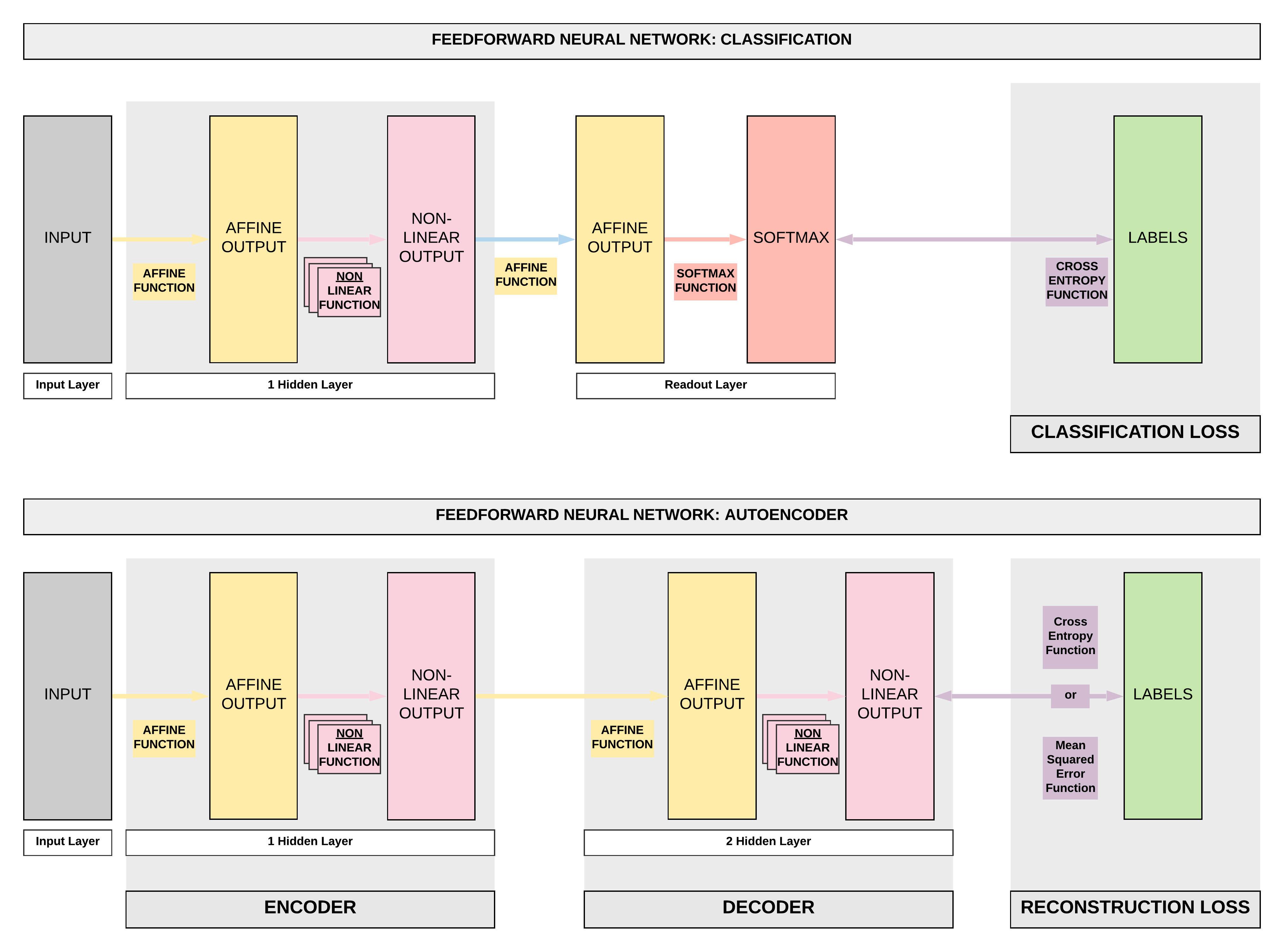Autoencoders with PyTorch¶
Run Jupyter Notebook
You can run the code for this section in this jupyter notebook link.
About Autoencoders¶
Feedforward Neural Network (FNN) to Autoencoders (AEs)¶
- Autoencoder is a form of unsupervised learning.
- This is a big deviation from what we have been doing: classification and regression which are under supervised learning.
- There are no labels required, inputs are used as labels.
- This is a bit mind-boggling for some, but there're many conrete use cases as you'll soon realize.
- Just a quick preview of use cases we will be covering:
- Denoising overcomplete AEs: recreate images without the random noises originally injected.
- Undercomplete AEs for anomaly detection: use AEs for credit card fraud detection via anomaly detection.
- Variational AEs for creating synthetic faces: with a convolutional VAEs, we can make fake faces.
- An autoencoder's purpose is to learn an approximation of the identity function (mapping \(x\) to \(\hat x\)).
- Essentially we are trying to learn a function that can take our input \(x\) and recreate it \(\hat x\).
- Technically we can do an exact recreation of our in-sample input if we use a very wide and deep neural network.
- Essentially we are trying to learn a function that can take our input \(x\) and recreate it \(\hat x\).

Undercomplete and Overcomplete Autoencoders¶
- When we highlighted some use cases, did you notice how we mentioned undercomplete and autocomplete AEs?
- The only difference between the two is in the encoding output's size.
- In the diagram above, this refers to the encoding output's size after our first affine function (yellow box) and non-linear function (pink box).
- Undercomplete AEs: smaller
- This is when our encoding output's dimension is smaller than our input's dimension.
- Essentially we reduced the dimension of our data (dimensionality reduction) with an undercomplete AE
- This is when our encoding output's dimension is smaller than our input's dimension.
- Overcomplete AEs: larger
- This is when our encoding output's dimension is larger than our input's dimension
- Essentially we increased the dimension of our data with an overcomplete AE
- This is when our encoding output's dimension is larger than our input's dimension
Fully-connected and Convolutional Autoencoders¶
- Another important point is that, in our diagram we've used the example of our Feedforward Neural Networks (FNN) where we use fully-connected layers.
- This is called Fully-connected AE.
- However, we can easily swap those fully-connected layers with convolutional layers.
- This is called Convolutional AE.
Autoencoders Series¶
- We'll be covering a series of autoencoders in this order
- Fully-connected Overcomplete Autoencoder (AEs): Denoising Images
- Fully-connected Undercomplete Autoencoder (AEs): Credit Card Fraud Detection
- Convolutional Overcomplete Variational Autoencoder (VAEs): Generate Fake Human Faces
- Convolutional Overcomplete Adversarial Autoencoder (AAEs): Generate Fake Human Faces
- Generative Adversarial Networks (GANs): Generate Better Fake Human Faces